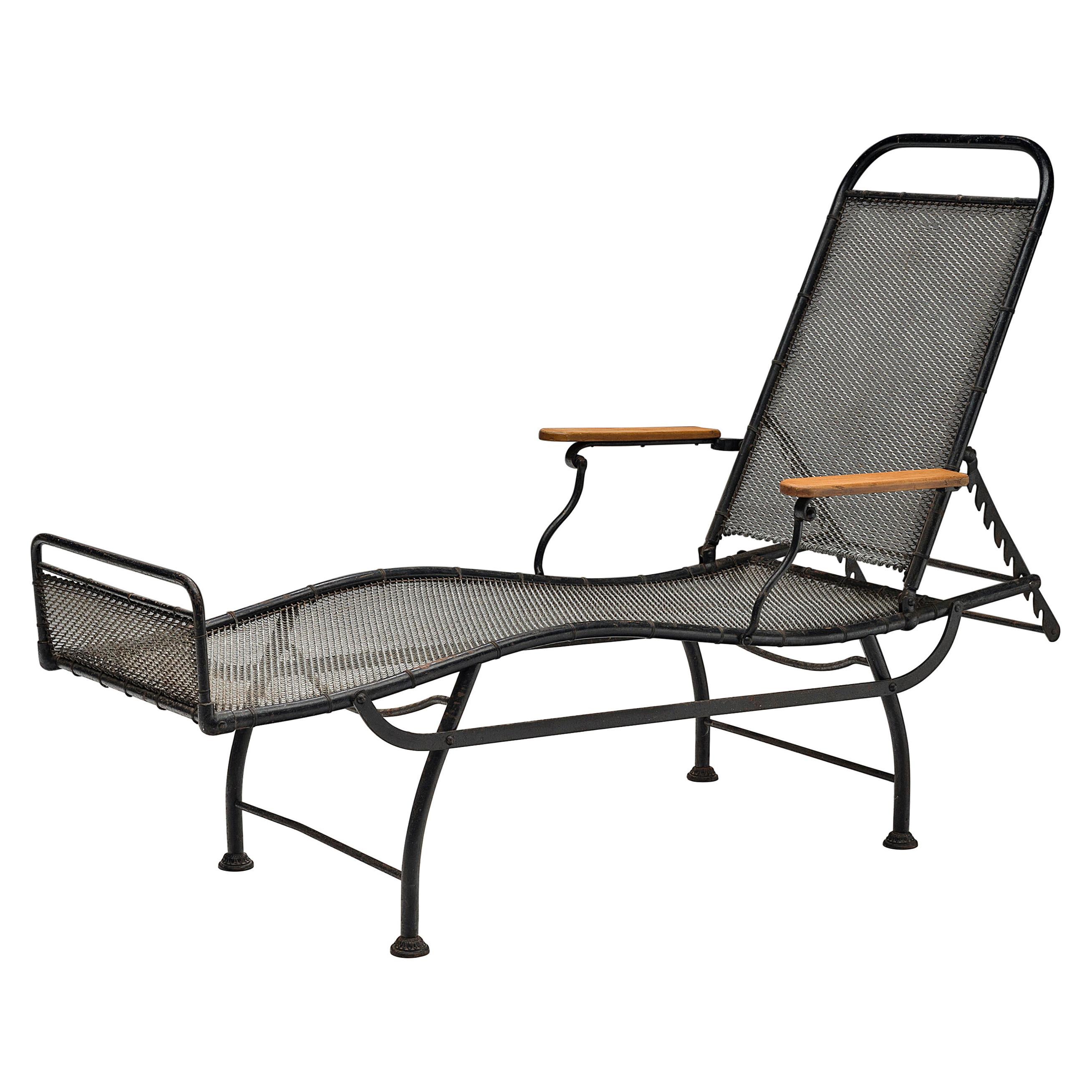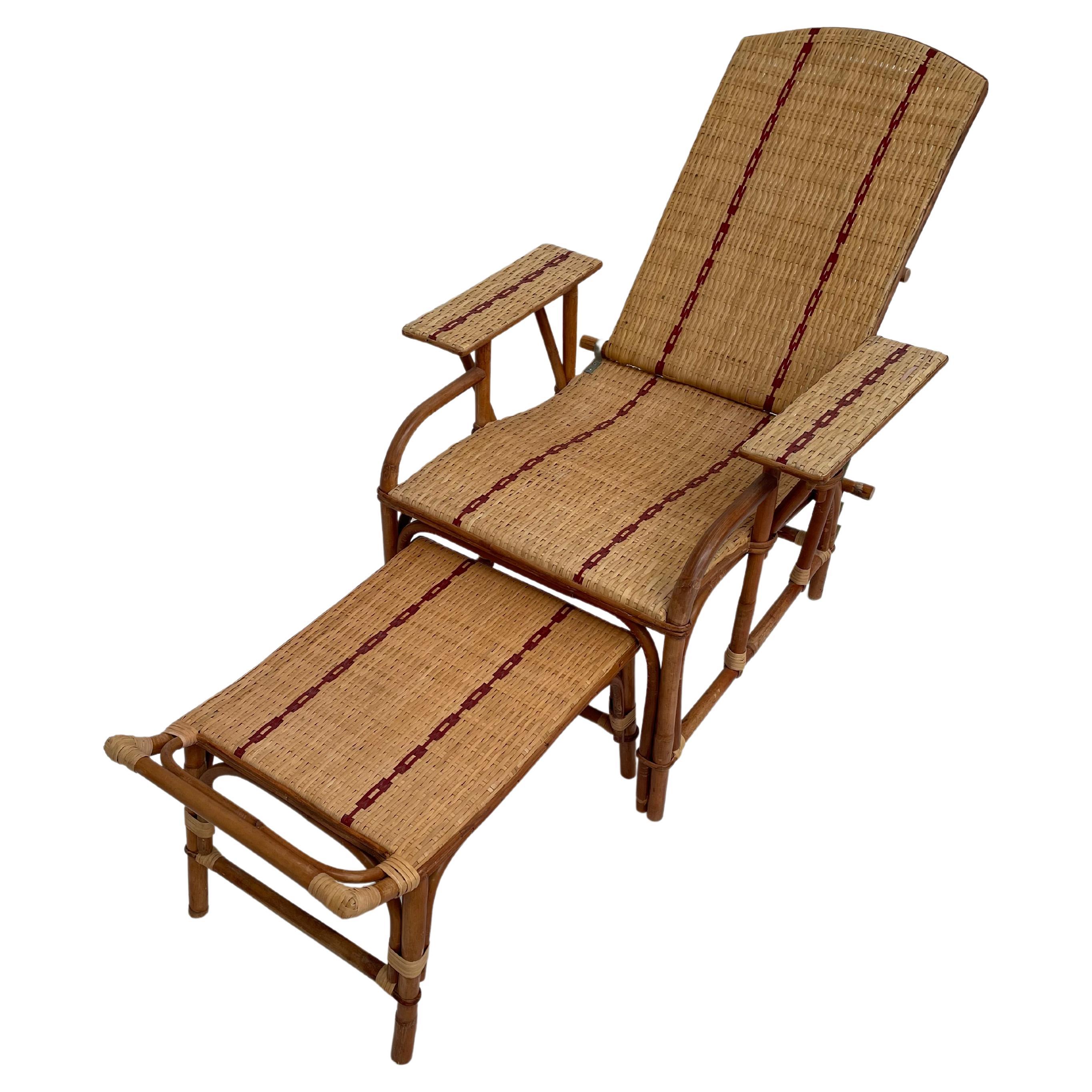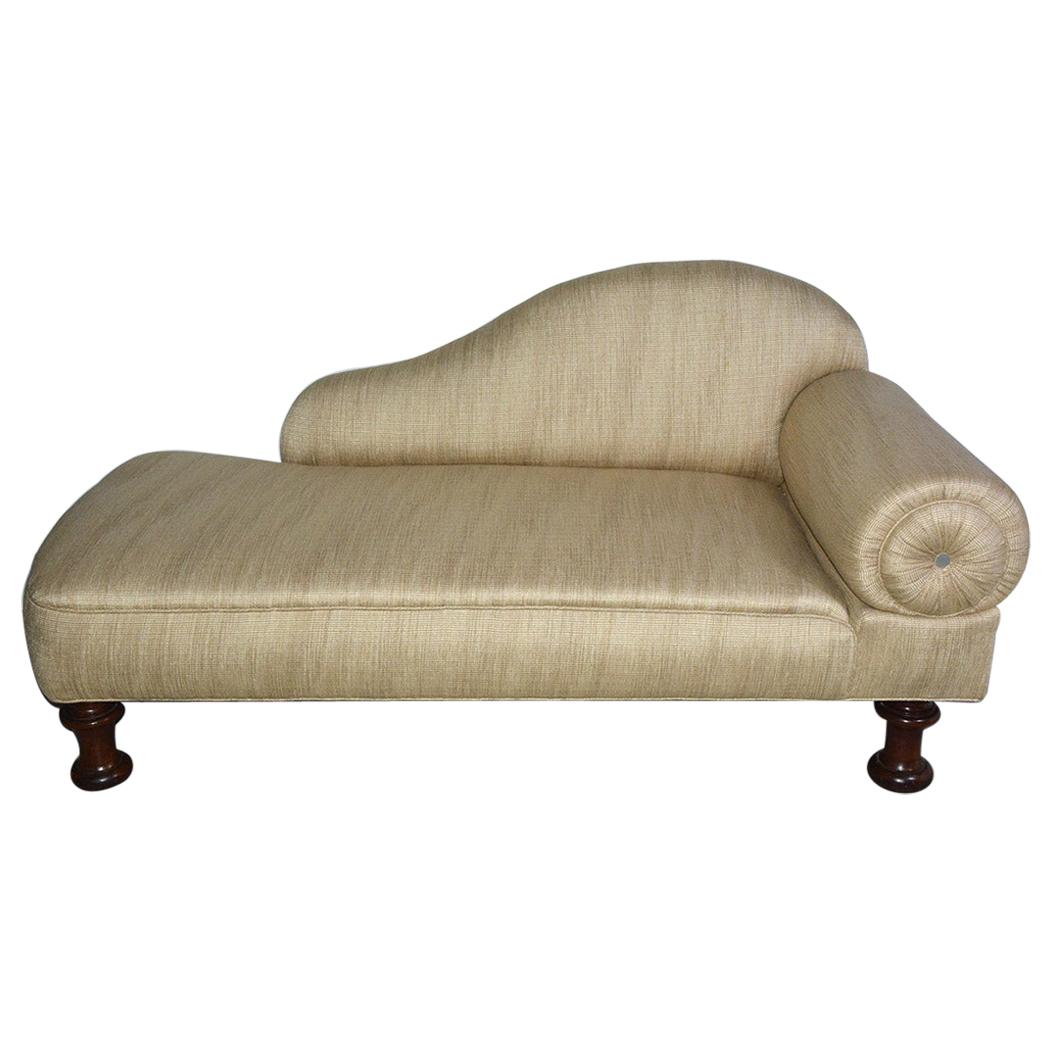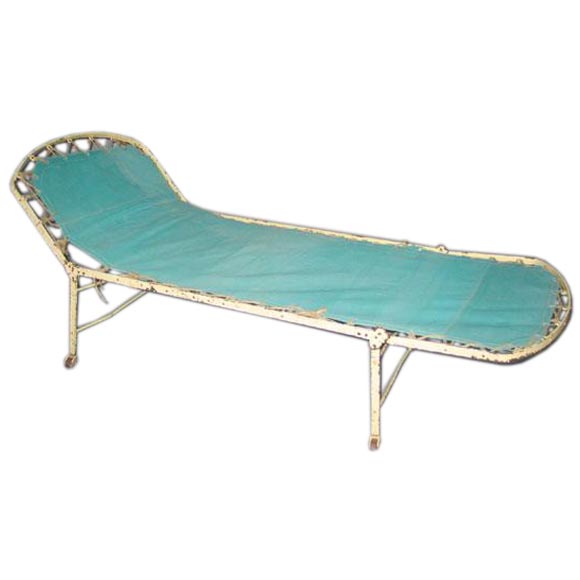Items Similar to Chaise Longues Style Art Deco, Year 1930, Country: France, Wood and Mirror
Video Loading
Want more images or videos?
Request additional images or videos from the seller
1 of 8
Chaise Longues Style Art Deco, Year 1930, Country: France, Wood and Mirror
About the Item
Chaise Longues
Style :Art deco
Year : 1930
Country: France
Materials: wood and mirror
We have specialized in the sale of Art Deco and Art Nouveau and Vintage styles since 1982.If you have any questions we are at your disposal.
If you are looking for coffe table to match your armchair, we have what you need.
Pushing the button that reads 'View All From Seller'. And you can see more objects to the style for sale.
Art. Deco
The term was coined in the 1960's as such and came from the International exhibition of "Decorative arts & modern industries" held in Paris in 1925. This exhibition was meant to be held long before this date as a direct response of the International exhibitions of Torino and Milan, respectively held in 1902 & 1906. Due to lack of funding, agreements between organizers and finally WW1, this major exhibition was put off until 1925, when times became more favorable for such a massive undertaking. As one can imagine, the tastes of 1925 were drastically different than in 1910 and allowed for radical new ideas to emerge. Now, what is "art Deco"? Be it in France, USA, Japan or Europe in general, the similarity is striking. The main difference is timing, French Art Deco lasted from 1918 to 1939, American Art Deco goes beyond that time and started later on as a movement. We know this movement was abandoned in France in 1939 as the German Nazis started using Deco symbols and the French reacted negatively and simply moved away from this style. In essence "Art Deco" is a style represented by symmetrical, rectilinear lines, abstract designs & bold contrasting colors embracing industrial techniques as a whole. In contrast, Art Nouveau was more focused on asymmetrical lines (whiplash curves), realistic true to nature design and soft coordinated colors, with the big movement leaders against using industrial techniques (though most used it). Our focus here will be on glass, more importantly on one great artist of this era: Charles Schneider. Schneider is fast becoming recognized, and rightly so, as the leading force in art glass during the Art Deco movement. His contribution is an important one in influencing and initiating the art glass movement transition from Art Nouveau to Art Deco in France.
Why are there so many antiques in Argentina?
In the 1880 – 1940 there was a grate wave of immigration encouraged by the periods of war that were taking place.
1st World War took place between 1914 and 1918
2nd World War took place between 1939 and 1945
The immigrants options were New York or Buenos Aires. Tickets were cheap and in Buenos Aires they were welcomed with open arms, as it was a country where everything was still to be done.
Argentina was the country of new opportunities, labour was needed and religious freedom was assured, in many cases the of the family travel first until they were settled and then the rest of the family members join them.
In the immigrant museum “Ellis Island Immigrant Building” in New York you can se the promotional posters of the boats that would take them to a new life.
Between the years 1895 and 1896, Argentina had the highest DGP (gross domestic product) per capita in the world according to the Maddison Historical Statistics index, this situation arose due to the large amount of food being exported to European countries, which were at war.
The Argentinean ships left the port of Buenos Aires with food, but they returned with furniture, clothes and construction elements, (it´s common to see this the old buildings of the historic neighbourhood of San Telmo, the beams with the inscription “Made in England)”, as well as many markets that were built in Buenos Aires, such us the San Telmo Market, whose structure was brought by ship and afterwards assembled in 900 Defensa Street.
With the great influence of European immigrants living in the country, the children of the upper classes travelled to study in France, resulting in the inauguration of “La Maison Argentinienne”, on 27th of June 1928, in the international city of Paris, which hosted many Argentinians that were studying in Frace.
It´s the fourth house to be built after France, Canada and Belgium, being the first Spanish-speaking one. Still in place today (17 Bd Jourdan, 75014, Paris, France). Many of the children of these wealthy families who attended international art exhibitions, museums and art courses abroad, took a keen interest in the European style. This is why Buenos Aires was at the time referred as “The Paris of South America”.
Between the years 1890 and 1920 more than a hundred Palaces were built on Alvear Avenue the most exclusive avenue in Buenos Aires. Today some of these palaces have been transformed into museums, hotels and embassies.
In the year 1936, the Kavanagh building was inaugurated, it was the tallest reinforced concrete building in South America.
During 1994 the American Society of Civil Engineers distinguished it as an “international engineering milestone”, and it´s now considered a World Heritage of Modern Architecture.
At the time was common to hire foreign architects such as Le Corbusier, who visited Buenos Aires/Argentina in 1929 and in 1948 he drew up the blueprints for a house built in La Plata City (which was declared a World Heritage Site).
In 1947, the Hungarian architect Marcelo Breuer designed “Parador Ariston” in the seaside city of Mar del Plata. After an Argentinean student at Harvard University convinced him to come to Argentina. He worked on an urban development project in the Casa Amarilla, area of La Boca.
The Ukrainian architect, Vladimiro Acosta, arrives in Argentina in 1928 and worked as an architect until que moved to Brazil.
Antonio Bonet, a Spanish architect who worked with Le Corbusier in Paris, arrives in Argentina in 1937, where he carried out several architectural works and in 1938 designs the well-known BFK chair.
Andres Kálnay, of Hungarian origin, made around 120 architectural masterpieces, among which the former Munich brewery stands out, he even made the furniture’s design.
The German architect, Walter Gropius, director of the Bauhaus, lived in Argentina, where he wrote articles for “Sur” magazine and founded in Buenos Aires, an architectural firm with Franz Möller, who was also an architect, where he built two houses.
At the same time several famous designers decided to immigrate to Argentina, among them we can find the well-known French designer, Jean-Michel Frank, who arrived in the country in 1940 and also worked for the Rockefeller family.
Special pieces were made, which were sold exclusively in the country, such as the well-known German company “WMF”, who sold their products by catalogue, which were chosen by the ladies of high society in the list of wedding gifts, as well as the pieces designed by Christofle.
The Swiss sculptor Alberto Giacometti, made special pieces for Argentinean mansions.
In 1904 the first Jansen branch outside Paris was established in Buenos Aires, as the Argentinean clientele demanded a large amount of furniture, from the end of the 19th century to the mid-20th century.
In 1970, the brand Rigolleau Argentina made pieces authorised by Lalique.
The brands Maple and Thompson also set up shop in the country.
The French plastic artist, Marcel Duchamp moved to Argentina in 1918-1919.
Glass signed Gallé, Charder, Leverre, Schneider, Muller and other French firms. They were bought in flower shops and were given to ladies with beautiful floral arrangements.
Some furniture manufacturers travelled to international fairs and bough the patterns to produce the furniture in Argentina, such as the furniture firm Englander and Bonta, who bought the patterns ins Italy.
It is worth mentioning that in Argentina we have the largest community of Italians outside of Italy, as it is estimated that 70 percent of the inhabitants have at least one Italian descendant, followed by Spanish immigrants.
The most Important furniture stores in Argentina:
Comte is founded in 1934 (under the direct management of Jean Michel Frank in 1940).
Nordiska (Swedish company established in 1934).
Churba in 1960, a company that brought foreign designers to present their furniture in the country:
Denmark: (Arne Jacobsen, Finn Juhl, Bender Madsen, Ejner Larsen, Poul Kjaerholm, Hans Wegner)
Sweden: (Hans Agne Jakobsson, Gustavsberg)
United States: (Herman Miller)
Finland: (Lisa Johansson, Folke Arstrom, Tapio Wirkkala, Alvar Aalto, Timo Sarpaneva)
Swedish Factory: (Orrefors)
Italy: (Littala, Vico Magistretti, Emma Gismondi, Gae Aulenti, Angelo Mangiarotti, Elio Martinelli, Gianna Celada, Angelo Mangiarotti, Mario Bellini, Carlo Scarpa)
Finland: (Olivia Toikka)
Plata Lappas (Lappas Silver): a goldsmith shop founded in 1887 in Argentina by Alcibiades Lappas of Greek origin.
In 2019, in Argentina took place “the Art Deco world congress”, in which we participated as hosts invited by Geo Darder, founder of the Copperbridge – Foundation, in which prominent people from all over the world attended to learn about Art Deco in Argentina.
Argentina currently has more than 100 Art Deco buildings and another 90 Art Nouveau buildings throughout the city of Buenos Aires.
Argentina is a country that has not been involved in many wars, which is why it has been a refuge for works of art and antiques from different periods of time, unlike European countries. That is way many collectors, museums and antique dealers from all over the world visit it, you should not miss the opportunity to visit this great country.
Laura Guevara Kjuder, architect.
- Dimensions:Height: 68.9 in (175 cm)Width: 32.68 in (83 cm)Depth: 112.6 in (286 cm)Seat Height: 16.93 in (43 cm)
- Style:Art Deco (Of the Period)
- Materials and Techniques:Mirror,Wood
- Place of Origin:
- Period:
- Date of Manufacture:1930
- Condition:Refinished. Wear consistent with age and use.
- Seller Location:Ciudad Autónoma Buenos Aires, AR
- Reference Number:
About the Seller
5.0
Vetted Seller
These experienced sellers undergo a comprehensive evaluation by our team of in-house experts.
Established in 1982
1stDibs seller since 2022
21 sales on 1stDibs
Typical response time: <1 hour
- ShippingRetrieving quote...Ships From: Ciudad Autónoma Buenos Aires, Argentina
- Return PolicyThis item cannot be returned.
More From This SellerView All
- Art Deco Stool, Year 1930, Material Wood, Country FranceLocated in Ciudad Autónoma Buenos Aires, CStools Art Deco. Material: wood You want to live in the golden years, this is the stool that your project needs. We have specialized in the sale of Art Deco and Art Nouveau style...Category
Vintage 1930s French Art Deco Stools
MaterialsWood
- Art Deco France Mirror in Wood, Year: 1930,Located in Ciudad Autónoma Buenos Aires, CAmaizing mirror Material: Wood Style: Art Deco Country: France If you want to live in the golden years, this is the mirror that your project needs. We have specialized in the sale o...Category
Vintage 1930s French Art Deco Wall Mirrors
MaterialsMirror, Wood
- Art Deco France Mirror in Wood, Year: 1930Located in Ciudad Autónoma Buenos Aires, CAmaizing mirror Material: Wood Style: Art Deco Country: France If you want to live in the golden years, this is the mirror that your project needs. We have specialized in the sale o...Category
Vintage 1920s French Art Deco Wall Mirrors
MaterialsMirror
- Coffe Table in wood , Style Art Deco, Year: 1938, Country FranceLocated in Ciudad Autónoma Buenos Aires, CCoffe table Style: Art Deco Year: 1938 Country: France It is an elegant and sophisticated coffe table. You want to live in the golden years, this is the dining table that your proje...Category
Vintage 1930s French Art Deco Coffee and Cocktail Tables
MaterialsWood
- Art Deco Mirror in Wood and Mirror, Year: 1920, FranceLocated in Ciudad Autónoma Buenos Aires, CAmaizing mirror Material: Wood and mirror Style: Art Deco Country: France If you want to live in the golden years, this is the mirror that your project needs. We have specialized in...Category
Vintage 1920s French Art Deco Wall Mirrors
MaterialsMirror, Wood
- Art Deco France Mirror in Wood, Year: 1920,Located in Ciudad Autónoma Buenos Aires, CAmaizing mirror Material: Wood Style: Art Deco Country: France If you want to live in the golden years, this is the mirror that your project needs. We have specialized in the sale o...Category
Vintage 1920s French Art Deco Wall Mirrors
MaterialsMirror, Wood
You May Also Like
- French Adjustable Chaise Longue in Black Metal and WoodLocated in Waalwijk, NLChaise longue, metal, wood, France, 1930s This functional, adjustable daybed features a frame in black metal and a seat of spiral metal webbing. The backrest is adjustable in differ...Category
Vintage 1930s French Modern Chaise Longues
MaterialsIron
- Rattan Art Deco Vintage Chaise Longue by Perret & Vibert Attributed France 1920sLocated in Vienna, ATRattan Art Deco vintage chaise longue or daybed, which was created by Perret & Vibert attributed, France, 1920s. This rare and elegant chaise longue f...Category
Vintage 1920s Art Deco Chaise Longues
MaterialsIron
- French, 1900s, Design Rattan and Wicker Recliner Relax Chaise LongueLocated in Tourcoing, FRFrench Design rattan and wicker recliner and relax chaise longue composed of an armchair in rattan structure, braided wicker back and s...Category
21st Century and Contemporary European Art Deco Daybeds
MaterialsRattan
- French Country Style Chaise Lounge with Custom Velvet ColorsBy MondoLocated in New York, NYLuxury comfort with soft, airy and refined elegance. This chaise longue showcases rustic elegance at its finest. The high-quality handmade work gives comfort and elegance to your per...Category
21st Century and Contemporary Spanish Modern Chaise Longues
MaterialsVelvet, Fabric, Jute, Cane, Wood, Trimming
- Upholstered Daybed Chaise LonguesLocated in Sheffield, MAGraceful and inviting, the recamier chaise with arched back and rolled arm. The fainting couch is upholstered but it does show some ware. Although made in the Victorian period, it ...Category
Antique Late 19th Century Late Victorian Chaise Longues
MaterialsUpholstery
- French Early Modern Style Fully Adjustable Campaign Daybed or Chaise LongueLocated in New York, NYA rare 19th century French wrought iron Campaign bed circa 1870 having folding capacity and a replaced burlap platform. Comfortable and composed ...Category
Antique 19th Century French Modern Chaise Longues
MaterialsMetal
Recently Viewed
View AllMore Ways To Browse
Sale Art Deco
French Country Wood
French Country Wood Furniture
Vintage Wood Lounge
Vintage Wood Matches
Vintage Country Fair
Wood Used For Matches
Vintage Hotel Lounge
Family Houses In The Country
French Country Seating
Danish Country Style
Vintage Country Market
French Antique Spanish Style
Furniture Of French Leaders
Century 19th Country Spanish
French Country Style Chairs
Lounge Set With Table
French Country Chair 19th Century





